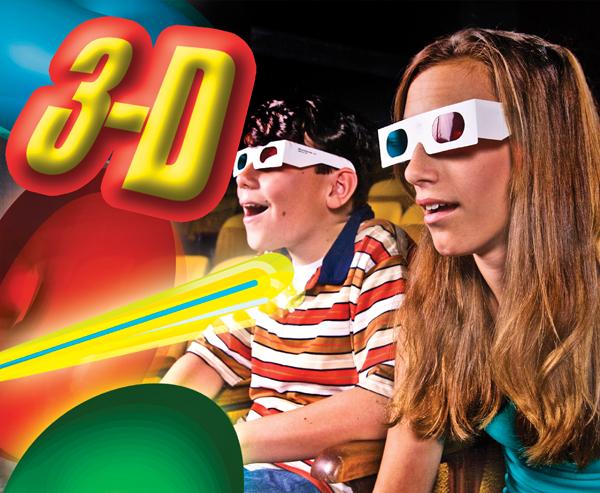Put your 3-D glasses on

Put your 3-D glasses on
October 1, 2009
Fans of animation and 3-D don’t have to wait much longer for another Pixar 3-D experience full of clear and crisp quality.
Pixar decided to present a one-time free double screening on Saturday, featuring the first two “Toy Story” movies in 3-D to promote “Toy Story 3,” which is set to come out in 3-D on June 18, 2010.
Being my first 3-D experience, I went to check the free screening out for myself and was pleasantly surprised to see that people of all ages were still crazy for main characters Woody, an old-fashioned stuffed cowboy, and Buzz Lightyear, a toy space ranger from Star Command.
During the movie, I noticed that the picture quality was much clearer and brighter than that of a regular animated movie.
During some parts of the film, I felt as though Buzz or Woody were bouncing out of the screen and into the audience.
I also observed some audience interaction with the movie during parts of the scenes. For example, in “Toy Story 2” in 3-D, audience members tried to grab the Styrofoam pieces that appeared to be flying into the crowd as Woody jumped out of a cardboard box.
With my goofy 3-D glasses on and popcorn in my lap, I felt like I was a toy who was on a quest to save the kidnapped Woody and safely return him back to his owner’s bedroom.
Some Sacramento State students said they enjoy the 3-D experience because it has a realistic aspect.
Rebecca Johnson, undeclared freshman, said that 3-D makes her feel like she’s in the movie.
“The last 3-D movie I saw was ‘Up’ and it just blew my mind. At some points I felt like I was actually in the house with them when (the house) was flying up into the clouds,” Johnson said.
“It was amazing. I think everyone should see an animated movie in 3-D at least once. It’s worth it.”
Some people may wonder how animated movies have made their transition into 3-D.
Kevin Wehr, professor of sociology at Sac State, said the transformation from regular animated films into 3-D did not just happen overnight.
Wehr said, “It’s taken some time to get to where we are now with 3-D animation. I think 3-D has a lot to with the technology that has been developed. There is the ability with digital technology and multiple cameras and digital editing to make that experience much more real and approachable for the audience members.”
Wehr recalled when 3-D made its big debut back in the 1950s.
“It was shown at this huge movie theater, big audience with the funny glasses on and in some ways not a whole lot has changed in 50 years,” he said. “Digital technology is where we see the biggest change because when we see it, it’s not this traditional movie going experience anymore. It’s been transformed into something much better.”
Barbara O’ Connor, professor of communication studies, said 3-D is multi-sensory.
“It really is the closest thing to having a real experience. It allows you to engage in a deeper level because it really feels like you’re in the environment as opposed to just observing it,” she said. “It’s a better communication medium. You really do feel like you’re right in it.”
As for why 3-D is so popular, Wehr said that it is simply the newest piece of technology people have become familiar with.
“It’s a novelty. It simulates a little bit more reality in the film experience, so when a viewer views 3-D it feels a little bit more real. There’s more depth,” Wehr said. “There’s more peripheral action. It feels like you’re a little bit more of a participant perhaps in the action.”
O’ Connor said 3-D has become so popular lately because people want an escape from their couch potato lifestyles.
“I think people are tired of watching movies in smaller formats,” she said. “We rarely sit and watch movies at home without any interruptions, so 3-D is fulfilling a few needs.”
Amber Wertman can be contacted at [email protected]




























































































































